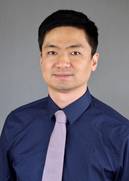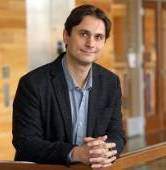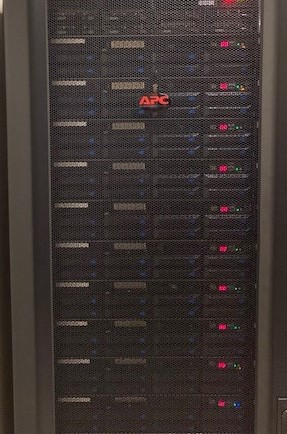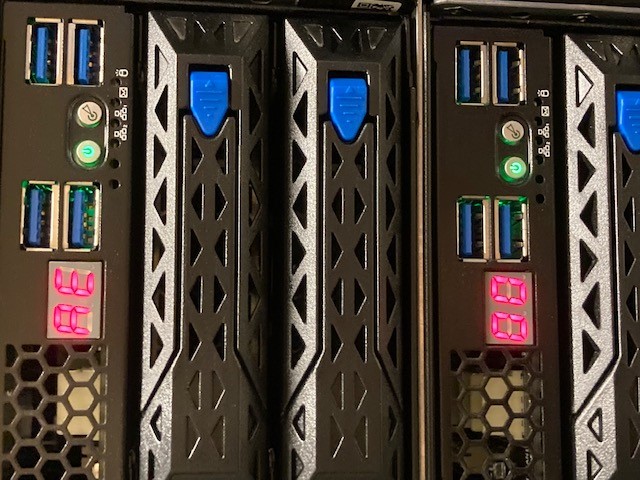
Dr. Jie Gao

Dr. Henry Medeiros
From image and signal processing to network control and automation, computing resources are essential to a wide range of applications and gaining more importance every day. To further advance its infrastructure for research and teaching, especially in computer engineering, the Department of Electrical and Computing has purchased and built its High-Performance Computing (HPC) cluster. The cluster features ten nodes, each equipped with an AMD EPYC 7402P process (24 Cores@2.8 GHz), 128GB DDR4 memory (16GBx8), 2TB PCIe NVMe SSD, NVIDIA A5000 24GB GDDR6 GPU, and 10GbE NIC. Figure 1 and Figure 2 below show the overall look of the cluster and the details of the nodes, respectively.

Figure 1: Overall look of the HPC cluster

Figure 2: Details of the nodes in the cluster
The HPC cluster is located in the server room of the GasDay Lab at Olin Engineering 534, as shown in Figure 3. Professor Henry Medeiros led the setup and configuration of the HPC, which is expected to run at its full capacity soon. In the future, the role of director of the cluster will be rotated among faculty members using this cluster, with each faculty member serving a period of one to two years. The cluster director will be responsible for maintaining and upgrading the system and for providing user support and documentation. Dr. Jie Gao is the current director.
Once the HPC cluster becomes fully functional, faculty, graduate students, and undergraduates in the department will have remote access to it, benefiting both teaching and research. In teaching, a variety of courses that require high computational capabilities can take advantage of the cluster, such as:
- EECE 6932 – Computer Vision
- EECE 4520 / EECE 5520 – Digital Image Processing
- EECE 6530 – Machine Learning
- COEN 4890/ EECE 5890 - Machine Learning for Image Processing

Approximately 70 students enroll in the courses described above every year. The cluster can provide these graduate and undergraduate students opportunities to develop hands-on skills on high-performance computing frameworks, advanced machine learning methods, and distributed algorithm design techniques. As we continue to improve our graduate and undergraduate curricula, we expect additional courses to leverage the availability of the cluster in the future. Moreover, the cluster will be available to undergraduate students in the department who are interested in machine learning, big data, and high-performance computing, all of which are highly desirable skills in the job market.
Figure 3: The cluster in the server room in Olin Engineering 534
In research, the cluster can benefit many research groups in the department by allowing them to:
- train more complex deep learning models and explore a larger parameter space
- speed up the training of deep neural networks
- explore parallel computing and programming on GPUs (CUDA)
- run faster simulations of complicated or large-scale systems, such as vehicular networks or industrial IoT systems
- increase productivity in processing large medical images
The cluster will provide faculty members with computational capabilities comparable to those available to most world-class research groups on topics related to machine learning. It will also allow graduate students to work on research projects that have high computational requirements to further improve their research skills and research productivity. Additionally, we anticipate summer undergraduate research activities to be performed by the undergraduate students under the supervision of the faculty members involved with the cluster. As a result, the cluster is expected to have a direct impact on the research of the department.
We are excited about this new HPC cluster, which is another important piece of equipment that will improve the competitiveness of the department from the aspects of teaching, research, and student recruiting and benefiting many faculty members and students.





